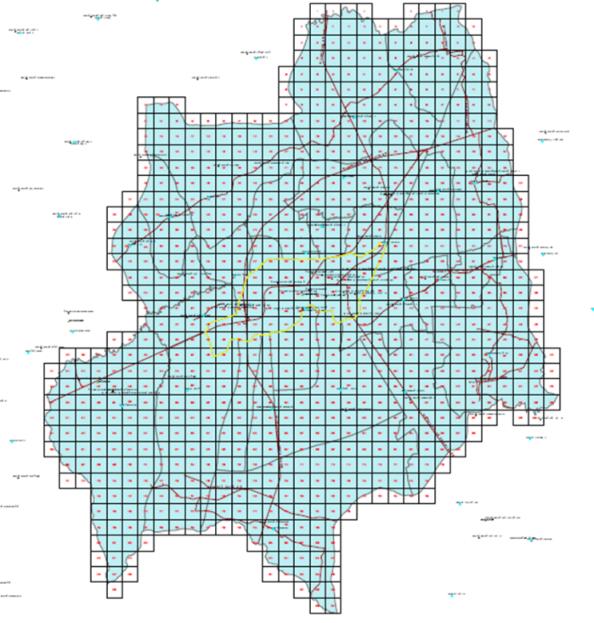Efficiency Assessment Model Development of Emergency Medical Service Systems: Case Study of Nakhon Ratchasima Province
Keywords:
Emergency Medical Service, Operations Research, Efficiency Assessment ModelAbstract
Emergency Medical Service (EMS) plays an important role in pre-hospital patient care service. Generally, its efficiency is assessed by the response time of the service to the incident scene. However, measuring only the response time does not reflect the overall efficiency because there are other factors affecting the service efficiency, such as area coverage of the incidents, service availability, and risk control. This study aims to develop a holistic EMS efficiency assessment model by evaluating service operations in (1) Incident coverage (2) Response time to the incident (3) Service availability (4) Staff safety and (5) Risk management capability, by using operations research and management service tools. This study selected Nakhon Ratchasima Muang District as the targeted area. There are 13 EMS stations in the city, including seven full-service EMS stations and six primary stations. Efficiency analysis of each dimension was assessed in term of percentage to reflect the potential of the overall service. The evaluation results indicated the efficiency for each dimension as follows: 82.8 percent for incident coverage, 90.09 percent for response time, 78.29 percent for service availability, 77.17 percent for staff safety, and 85.83 percent for risk management capability. In conclusion, the current EMS stations have limited capability on service availability and staff safety. The recommended solution includes establishing more EMS stations at appropriate locations. Also, this model would act as a tool for policy-making to enhance the quality of emergency medical service.
References
2. De Maio VJ, Stiell IG, Welss GA, Spaite DW. Optimal defibrillation response intervals for maximum out-of-hospital cardiac arrest survival rates. Ann Emerg Med 2003; 42: 242–250.
3. Church R, ReVelle C. The Maximal Covering Location Problem. Papers of the Regional Science Association 1974; 32:101-118.
4. Kloeden CN, McLean AJ, Glonek G. Reanalysis of Travelling Speed and the Risk of Crash Involvement in Adelaide South Australia. Australian Transport Safety Bureau; 2002.
5. Jia H, Ordonez F, Dessouky M. A modeling framework for facility location of medical services for large-scale emergencies. IIE Transactions 2005; 39: 41-55.
6. Silva PMS, Pinto LR. Emergency medical systems analysis by simulation and optimization. Proceedings of the 2010 winter simulation conference 2010; 1: 2422–2432.
7. Polsky SS, Weigand JV. Quality assurance in emergency medical service systems. Emerg Med Clin North Am 1990; 8: 75-84.
8. Ma MH, Chiang WC, Ko PC, Huang JC, Lin CH, Wang HC. Outcomes from out-of-hospital cardiac arrest in Metropolitan Taipei: does an advanced life support service make a difference? Resuscitation 2007; 74(3):461–469.
9. Ong ME, Cho J, Ma MH, Tanaka H, Nishiuchi T, Al Sakaf O. Comparison of emergency medical services systems in the pan-Asian resuscitation outcomes study countries: report from a literature review and survey. Emerg Med Australas 2013; 25(1): 55–63.
10. Pittet V, Burnand B, Yersin B, Carron PN. Trends of pre-hospital emergency medical services activity over 10 years: a population-based registry analysis. BMC Health Serv Res. 2014; 14(1): 380-386.
11. Hakimi SL. Optimum Locations of Switching Centers and the Absolute Centers and Medians of a graph. Operation Research 1964; 12: 450-459.
12. Erkut E, Ingolfsson A, Erdogan G. Ambulance location for maximum survival. Nav Res Logist 2008; 55(1): 42–55.
13. Lina Aboueljinane ZJ, Evren Sahin. Reducing Ambulance Response Time Using Simulation: The Case of Val – De - Marne Department Emergency Medical Service. Proceedings of the 2012 Winter Simulation Conference 2012; 1: 1-12.
14. Natdanai C, Phongchai J. EMS Location Analysis to Minimize Service Risk. 10th SEATUC Symposium 2016; 1: 112-119.
15. Mitchell D. The End of Public Space? People's Park, Definitions of the Public, and Democracy. Annals of the Association of American Geographers 1995; 85: 108-133.

Downloads
Published
Issue
Section
License
บทความทุกบทความที่ตีพิมพ์ในวารสารการพัฒนางานประจำสู่งานวิจัย (JPR2R) ถือว่าเป็นลิขสิทธิ์ของวารสารการพัฒนางานประจำสู่งานวิจัย คณะสิ่งแวดล้อมและทรัพยากรศาสตร์ มหาวิทยาลัยมหิดล





